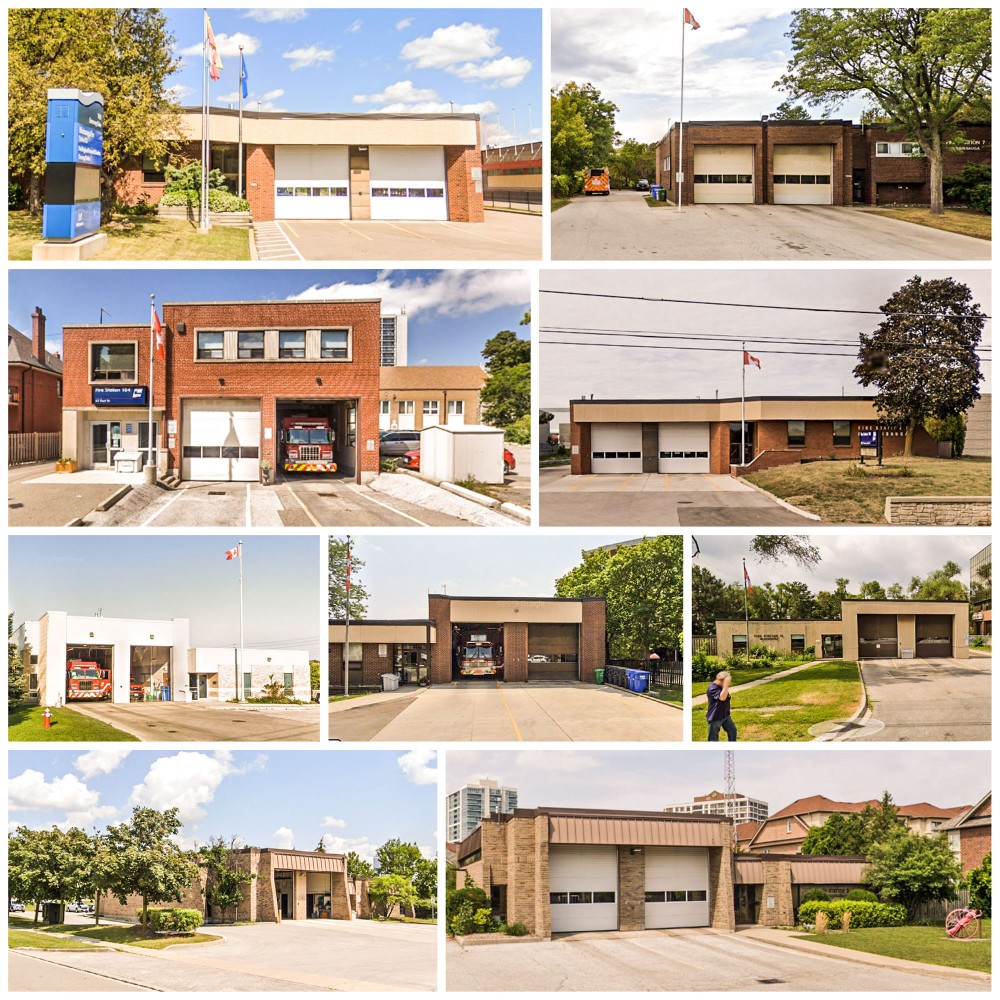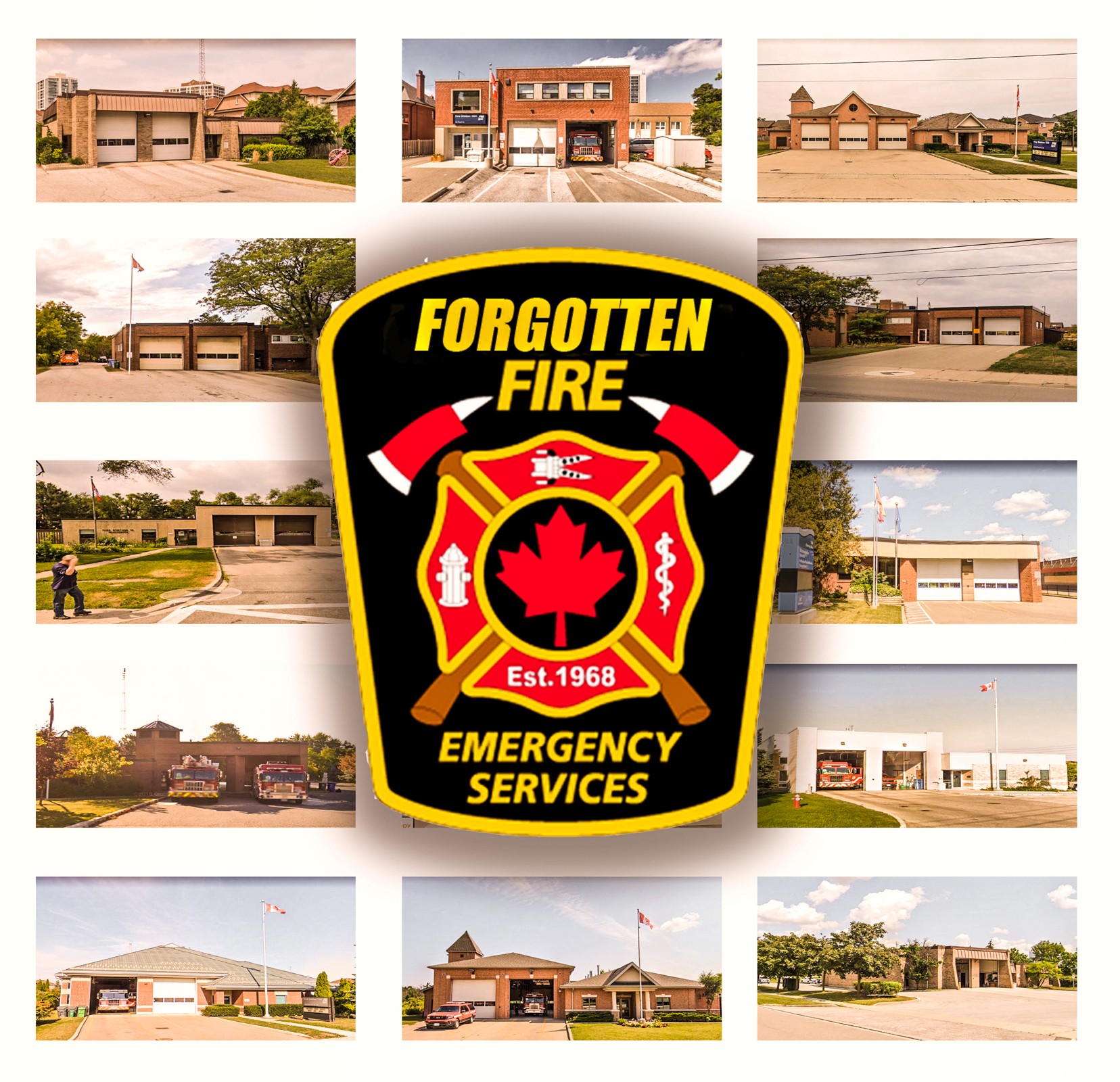
A decade ago Mississauga needed six new fire stations — it's built one
Deryn Rizzi, Mississauga’s recently appointed fire chief, has inherited a monumental task.
For decades, the City has grossly underinvested in its fire service as Mississauga has grown and years of neglect are catching up. Since the early 2000s, the City has failed to build enough fire stations to match its growing population, while those that it has built have fallen below standard and into a state of disrepair.
Rizzi, who stepped into her new role in January of this year, has already put her name to a bold report demanding $66 million from council across the next decade. It will fund refurbishments to bring 17 stations up to standard and pay for necessary repairs, which have been put off for years.
The report follows the recommendations of former Chief Tim Beckett, who departed at the end of 2020, which convinced council to build six new fire stations across a 12-year horizon. The new buildings will begin to address the fire service’s worrying response times, which sit well below established standards.
Rizzi, Beckett and his predecessor, John McDougall, have all faced similar and unsolved challenges. If the two men and one woman who have held the title of Mississauga Fire Chief over the past decade got together, they’d have a lot to talk about.
Deryn Rizzi is the third Mississauga fire chief in 10 years to face infrastructure problems caused by decades of neglect. (Image from the City of Mississauga)
Master plans available through the City of Mississauga and internal draft documents obtained by The Pointer illustrate this neglect and suggest a City that has stood still for years. They demonstrate that bureaucrats and councillors were warned the Mississauga Fire and Emergency Service (MFES) was suffering from woeful underinvestment in 2009 and did nothing.
Between 2009 and 2019, Mississauga wrote more fire master plans — two — than it built fire stations. According to Mississauga’s 2019 Fire Master Plan, the City built its last fire station in 2002, before a hiatus that stretched until late-2019, when Station 120 was opened.
This barren period came despite a master plan in 2010 that promised to build three new stations before 2014. Mississauga’s 2010 strategy said three separate stations were desperately needed to address inadequate and worsening response times: station 120 at Hurontario Street and Eglinton Avenue (eventually built in 2019); Station 123 at Burnhamthorpe Road and Winston Churchill Boulevard; and Station 124 at Dundas Street and Cawthra Road.
“Three stations and associated staffing should be added between 2011 and 2014 with the expectation that the overall response and impact of these stations be continually evaluated after each station is added,” the 2010 master plan suggested. “With projected population growth and intensification, these three stations may not be sufficient to build out.”
SPOT THE DIFFERENCE: Maps of Mississauga fire stations from 2010 (top) and 2021 are almost identical.
An internal draft document — the 2009 Station Location Study — shows this unsatisfied commitment was a conservative request. Three stations before 2014 would have allowed the City to get its first fire truck to the scene of an emergency within the standard of four minutes just 75 percent of the time. It was the bare minimum.
The draft report, reviewed by The Pointer, outlined another scenario where the City should build the first three stations over five years and an additional three in the five years that followed. This approach would have allowed Mississauga to work towards achieving the National Fire Protection Association (NFPA) 1710 industry standard, offering more safety to residents. The additional three stations were proposed for Dundas Street and Mavis, Tenth Line and Battleford and South Sheridan Way and Indian Road.
In order to actually meet the NFPA standards, a further seven stations would have been needed between 2019 and 2029. Mississauga has completely failed to achieve these two plans and its response times remain far below industry standards.
“Yes, studies done in 2009-2010 indicated a need for additional fire stations,” Shari Lichterman, commissioner of community services, told The Pointer by email. “The City has faced a number of challenges in delivering new stations over the past decade.”
Questions were directed to Paul Mitcham, now City Manager, who was in charge of the community services file until last year. The City’s media department provided responses from Lichterman instead, who has been in her role since last year.
“With competing capital funding needs across the City, a balance was required to fund fire stations, roads, community facilities, and maintain state of good repair of the City’s many assets,” she added, saying staff have been sounding the alarm on funding gaps for years.
Lichterman also pointed to the additional cost of staffing a new fire station with well remunerated firefighters. Availability of land was listed as a further barrier that had delayed Station 120 (eventually built on parkland) and a factor that continues to frustrate City plans.
“The current model has not considered the continuous growth that has occurred over the last ten years,” the 2009 draft report states. “The current station locations were based on a population of approximately 640,000 citizens and do not anticipate future growth. MFES currently does not meet the Council endorsed standard that is currently in place and is unable to meet it with current resourcing.”
In the 2019 master plan, many of the 2009 recommendations were recycled. Five of the six stations proposed in 2009 were recommended to council in a new master plan a decade later. Two years ago, council adopted a master plan with fire station locations suggested ten years previously.
“While there will be significant costs associated with adding new infrastructure, consideration must be given to the costs associated with not providing it,” the 2009 draft plan warned.
Time proved its author right.
The draft report also highlighted the concerning condition of fire stations. “Consideration should also be given to the renovation, rebuilding or relocation of Station 101,” it said.
Plans for renovating Mississauga’s aging fire stations, many of which are more than 30 years old, were not started until 2019. Renovations will now take place across the next decade and cost roughly $66 million.

Read more — The Pointer’s investigation into Mississauga’s aging fire halls:
The Pointer also reviewed presentation slides summarizing the findings of the draft 2009 fire station location study that were prepared for the City’s senior leadership team. This suggests the report and its various stark findings were not kept within the fire department, but presented to the commissioner of community services (Mitcham, now CAO) and then City Manager, Janice Baker. The most ambitious recommendations and harshest realities do not appear in the final 2010 master plan.
In the introduction to the 2009 draft report, staff expressed a sense of deja vu. The report’s potted history of past failings was not replicated in the final 2010 document.
“In 1993 a draft master plan was developed which concluded that there were clear service delivery gaps as a result of expanding residential and employment population bases,” the report explains. “It went on to express concerns that MFES resources had not kept up with growth in Mississauga.”
A slide presented to Mississauga’s senior leadership team shows the fire service was in trouble more than a decade ago
The 2009 draft report and 2010 master plan were written against a backdrop of financial hardship inside City Hall. As Mississauga boomed during its growth years, development fees rolled in and bulked out the City’s coffers. For 12 consecutive years, Mississauga was able to offer residents a tax freeze.
This political decision meant residents in the rapidly expanding city were not being asked to make a contribution to their future - it quickly began to add up. The failure to invest in MFES, despite decade-old recommendations, illustrates some of the sacrifices that were made. Even commitments made in the 2010 master plan were not honoured.
A failure to invest did not come without consequences.
The NFPA targets a total response time of 383 seconds 90 percent of the time for fire services, within this a travel time of 240 seconds (four minutes) is suggested. In its 2019 master plan, the City of Mississauga lowered these expectations and aims to meet the target response times 75 percent of the time.
According to data from Mississauga’s 2021 budget, at the 90 percent benchmark, MFES was an average of 2 minutes and 18 seconds above the four minute travel time. It was also one minute and 26 seconds above the total response time. At its lower standard, the service still exceeded the travel time target by an average of 52 seconds.
Mississauga’s 2006 budget presentation illustrated the City’s irresponsible budgeting habits
Concerns were raised in the 1990s about the service’s response time. They were resurfaced in the 2010s. In the 2020s, they’re still true.
In 2019, after the most recent master plan, the City introduced a budget levy designed to fund the fire service. It hopes to ensure the mistakes of the past decade are not repeated.
“Public safety is paramount and the City is committed to meeting response times and delivering on the master plans,” Lichterman added. “This is why the Public Safety Reserve and associated levy was developed in 2019. It allows for a consistent and stable funding source for our ten-year commitment to new stations (and now renovations to stations). A great deal of planning and analysis went into this solution for the fire station issue.”
Email: [email protected]
Twitter: @isaaccallan
Tel: 647 561-4879
COVID-19 is impacting all Canadians. At a time when vital public information is needed by everyone, The Pointer has taken down our paywall on all stories relating to the pandemic and those of public interest to ensure every resident of Brampton and Mississauga has access to the facts. For those who are able, we encourage you to consider a subscription. This will help us report on important public interest issues the community needs to know about now more than ever. You can register for a 30-day free trial HERE. Thereafter, The Pointer will charge $10 a month and you can cancel any time right on the website. Thank you.
Submit a correction about this story


